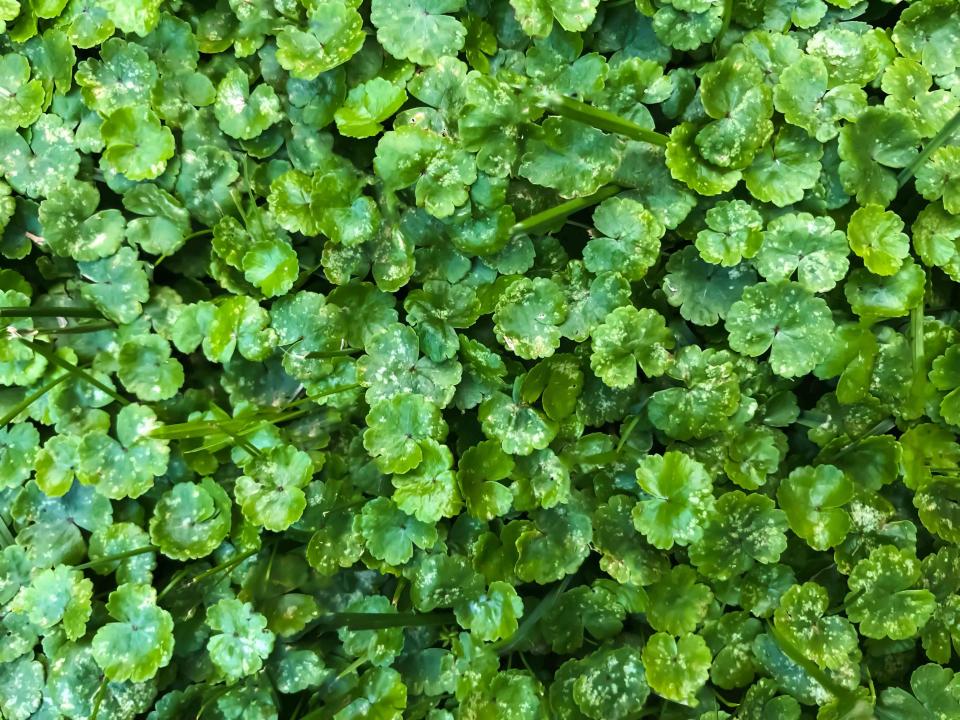How to Grow and Care for Dichondra—a Low-Maintenance Alternative to Turf Grass
This low-growing ground cover is typically used as an alternative to turf grass.

Catherine McQueen/Getty Images
Dichondra (Dichondra spp.) is a low-maintenance lawn alternative for anyone who is looking to move away from traditional turf grass. A part of the morning glory family, dichondra is usually grown as a ground cover as it can stand up to light foot traffic, but it can also thrive as a container plant or in hanging baskets. The broadleaf plant, which is hardy in zones 7 to 11, should be planted during early spring or fall and grows best in cooler, coastal climates.
Meet Our Expert
Damon Abdi of the Hammond Research Station at Louisiana State University's agricultural center
Tom Morris, director of public gardens and landscapes at the Pennsylvania Horticultural Society
Related: Clover Lawns Are the Landscaping Trend That Calls for Just 4 Mowings Per Year
What Is Dichondra?
A low-growing perennial plant with rounded leaves, dichondra produces small, inconspicuous greenish-white flowers in spring and summer. It is commonly grown in areas where a no-mow lawn is desired. "It covers the ground quickly and offers an aesthetically unique feature in the rounded leaves compared to typical turf grass found in lawns," says Damon Abdi of the Hammond Research Station at Louisiana State University's agricultural center.
In some areas, like the south, dichondra is considered a lawn weed. It often grows in poorly performing patches of turf and can spread vigorously, Abdi says. "However, the spreading habit and aesthetic foliage of this plant draw some people’s interest as a ground cover or turf grass alternative," he says.
Dichondra Varieties
Turn to these popular dichondra varieties when choosing one to use in your landscape.
Carolina Ponyfoot (Dichondra carolinensis): This species of dichondra is native to the southeastern U.S., says Abdi. It a fast grower that roots through stem nodes.
Kidney Weed (Dichondra repens): Dichondra repens is a maintenance-free, low-growing ground cover and is useful for spots where normal grasses may not do well, says Tom Morris, director of public gardens and landscapes at the Pennsylvania Horticultural Society.
Silver Ponyfoot (Dichondra ‘Silver Falls’): This variety has silvery-green foliage with a trailing habit, making it quite attractive as a container plant by adding a “spiller” feature over the edge, says Abdi. It's usually used as an annual plant.
How to Plant Dichondra
Like turf grass, dichondra should be planted in early spring and early fall. "These times allow for warm days, cool nights, and more regularity for rain, allowing for Mother Nature to provide the moisture needed for good establishment," says Morris.
Choose an area with full sun.
Loosen the soil and remove any weeds.
Spread dichondra seeds over the area.
Keep the soil consistently moist until germination.
How to Care for Dichondra
While dichondra requires minimal maintenance once established, there are some things to keep in mind when caring for this ground cover plant.
Light
Dichondra should receive at least six hours of full sun. While it can handle some shade, dichondra doesn't grow well in full shade.
Soil
Dichondra needs moist, but not overly wet, soil to support its spread. "Soil should be well drained to prevent water logging," says Abdi. Avoid planting dichondra in heavy clay soils, as those tend to stay moist for too long.
Water
When dichondra seeds are first planted, they should be watered regularly until germination. Once the plant is established, water dichondra deeply and infrequently, allowing it to dry slightly before watering again.
Fertilizer
Dichondra thrives in soil with low nutrients and grows well in areas where traditional lawn grasses might struggle, says Morris. Because of this, dichondra typically doesn't need regular fertilizer to thrive.
Temperature
This ground cover prefers cool, coastal climates, says Morris. However, it isn't a frost-tolerant plant and will not survive in temperatures below 25 degrees Fahrenheit. When planting dichondra, wait until temperatures are consistently above 70 degrees Fahrenheit.
Common Problems With Dichondra
Dichondra is typically a healthy plant, so you won't encounter many issues when caring for it, but there are a few common problems you may run into.
Disease
Dichondra is very hardy and doesn't fall victim to many diseases, but one common issue you may encounter is root rot. "Avoid overwatering; consistently wet soils can cause issues like root rot," says Abdi. "It can also be susceptible to general turf diseases, especially if maintained in wet soils."
Foot Traffic
One of the biggest downsides of dichondra as a lawn alternative is that it doesn't stand up to heavy foot traffic like turf does. "Limited foot traffic is recommended—it may not be so tolerant of a lot of pedestrians walking over it," says Abdi.
Pests
Dichondra is not very susceptible to pests. However, flea beetles and cutworms can be problematic, says Morris. These insects can feed on and weaken the plant's foliage. Rub the leaves with an insecticide to get rid of flea beetles and cutworms.
Read the original article on Martha Stewart.

